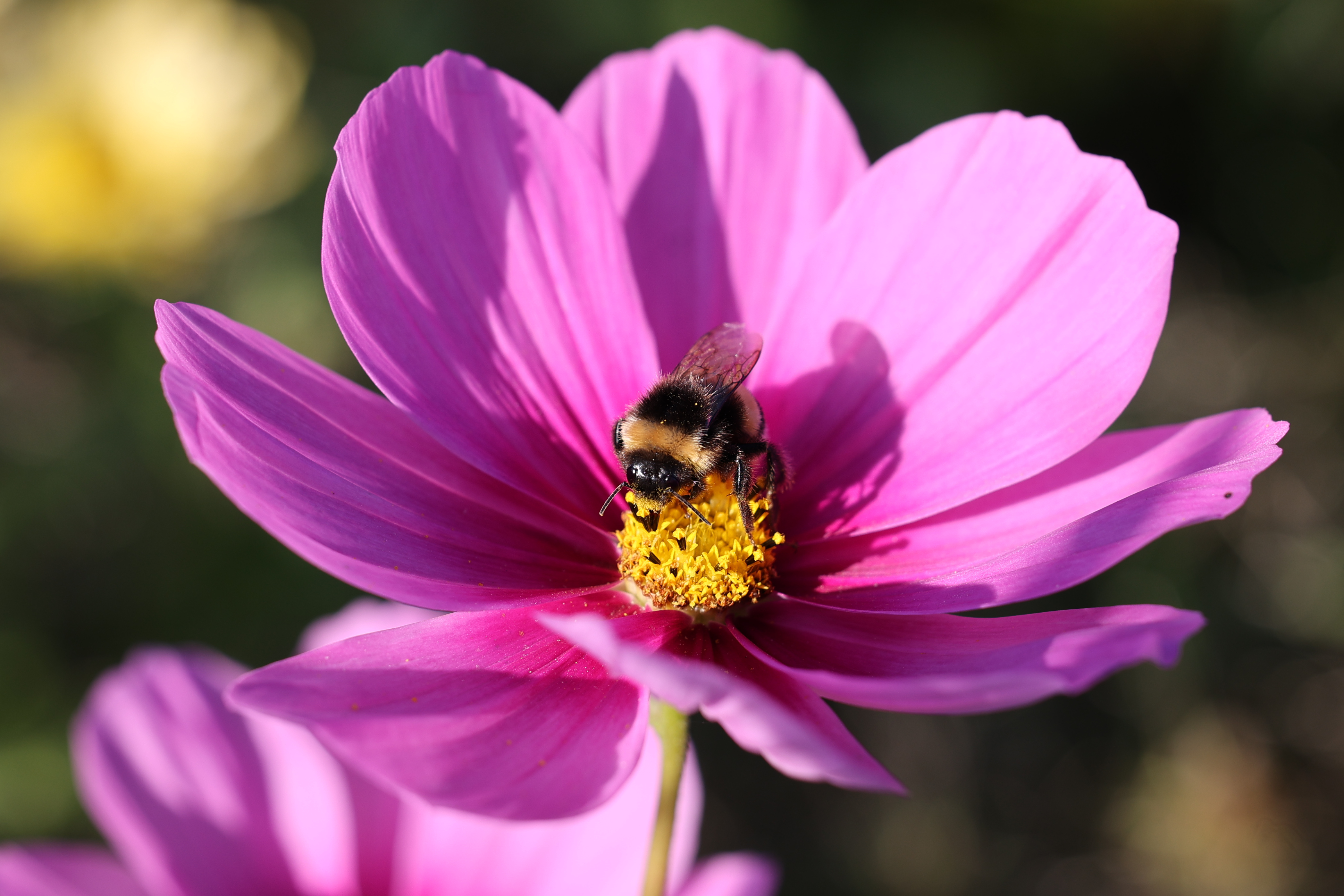
Threat to bumblebees from pesticides
Researchers from the University of Konstanz show in a new study the enormous influence of a new pesticide for the brood of bumblebees. They ascertain a decrease in colony growth by over 50 %.
Exploring one of the major anthropogenic stressors believed to be responsible for the well documented insect decline, Konstanz researchers investigated the impact of a novel pesticide on bumblebees. Bumblebees are social bees that raise their brood collectively. An important aspect of collective brood care in these annual species is the ability to collectively maintain the brood at stable and high temperatures, speeding up brood development and colony growth. The research was conducted by Anja Weidenmüller and colleagues from the University of Konstanz and the Cluster of Excellence Centre for the Advanced Study of Collective Behaviour.
A decrease in colony growth by over 50 %
Liliana Fischer and Anja Weidenmüller investigated that the novel pesticide Flupyradifurone significantly impairs this collective ability. “The decrease in brood temperature lead to prolonged brood developmental times and a decrease in colony growth by over 50 %”, says Fischer. “This reduction in colony growth has the potential to significantly curtail the reproductive chances of colonies in the field.” Weidenmüller adds: “This collective readout ‘brood temperature’ in bumblebee microcolonies can serve as reliable indicator of sublethal, but potentially devastating effects of agrochemicals.”
In a previous study, Weidenmüller and colleagues at the University of Konstanz had documented similar sublethal cognitive effects for a different agrochemical, glyphosate. Bumblebees exposed to glyphosate showed an impairment in aversive learning.
To obtain the latest results, which were published in Science of The Total Environment, the researchers developed a simple, widely applicable bio-essay to assess sublethal effects of agrochemicals and other stressors on collective behaviour in bumblebee microcolonies. They measured the brood temperature and brood development in 53 microcolonies over a course of 35 days. “We investigated how collective brood thermoregulation is affected by long-term feeding exposure to different agrochemicals and their combination”, says Fischer. “Importantly, we tested for these effects while colonies were exposed to the natural stressor resource limitation – a common natural stressor regularly confronted by wild bumblebee colonies.”
Urgent need for improved risk assessment
Currently, the risks involved with novel agrochemicals are assessed using simple toxicity tests, measuring the survival of well-fed, parasite free individuals of a few non-target species after exposure to an agrochemical. “Our study shows sublethal effects that have the potential to impact the reproductive success of wild colonies and that would remain undetected in current risk assessment procedures”, says Weidenmüller. That is why she demands that meaningful risk assessment must include such sub-lethal effects as well as a combination of common stressors as for example pesticide exposure under resource limitation. “And, for social species like bumblebees, collective readouts are a necessity in risk assessment”, says Weidenmüller. “Our findings thus highlight the urgent need for improved risk assessment procedures.”
Key facts
- Related publications:
- Liliana R. Fischer, Divya Ramesh, Anja Weidenmüller: Sub-lethal but potentially devastating - The novel insecticide flupyradifurone impairs collective brood care in bumblebees, Science of The Total Environment, Volume 903, 2023, https://doi.org/10.1016/j.scitotenv.2023.166097.
- M. Nouvian, J.J. Foster and A. Weidenmüller, Glyphosate impairs aversive learning in bumblebees, Science of the Total Environment (2023),
https://doi.org/10.1016/j.scitotenv.2023.165527 - Anja Weidenmüller, Andrea Meltzer, Stefanie Neupert, Alica Schwarz, Christoph Kleineidam, Glyphosate impairs collective thermoregulation in bumblebees, Science, DOI: 10.1126/science.abf7482
